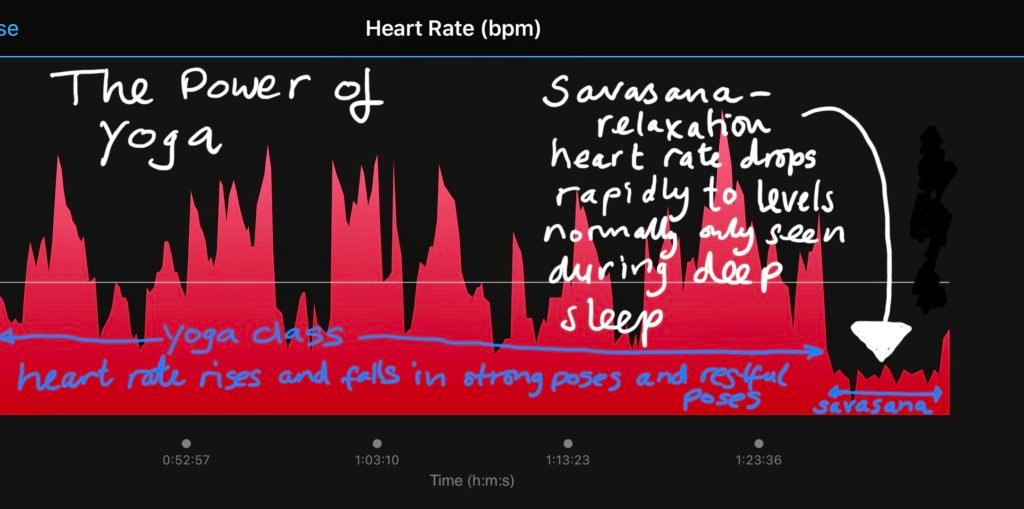
The picture above shows the heart rate monitor output from a recent yoga class. I decided to log the class to see how my heart rate varied during the 90 minute class. The results are clear to see! Working hard in some postures then resting between postures sees the heart rate rise and fall. The most striking thing though is the rapid drop in heart rate seen at the end of the class as the body surrenders completely into relaxation or “savasana”
Savasana or corpse pose is one of the most important poses of the class. It involves laying on the mat with arms and legs angled away from the trunk. The body has worked physically hard during the class, stretching, balancing, twisting. Internal organs are squeezed and massaged, muscles are contracted and stretched. The mind has to focus to balance on one leg or use nearly every muscle to maintain balance in a strong inversion like handstand. It is therefore very important to allow the body to come back to a new and hopefully improved level of stasis where organs, the lymphatic and endocrine systems (including the digestive and immune functions) are functioning at an improved level of efficiency. Your body will continue to adapt as you sleep later that night and in the days that follow, ultimately becoming stronger and better conditioned, inside and out.
In savasana we are aiming for a watchful deep rest as opposed to sleep. We look internally over the body noticing how it’s feeling, observing the rise and fall of chest during the natural rhythm of the breath. Noticing any areas that have not released and relaxed and using focus as we exhale to bring those areas to relaxation.
Don’t underestimate the art of relaxation. Savasana can be the most difficult pose of your practice. As a new student to yoga 18 years ago, I struggled to relax laying on a dusty drafty floor of a local hall surrounded by complete strangers! It took time but what a gift it is once you have trained your body to master this pose. As the picture above shows it is possible to reach a deep state of relaxation very quickly after a yoga class with the heart rate dropping to levels only normally seen during deep sleep.
A good yoga class sets up the conditions for a truly deep relaxation which is restorative and refreshing for the body and mind.
Many participants report sleeping very well after a class and this has been my experience as well and one of the reasons I love yoga so much.
If you think you would like to try yoga as a pathway to better sleep and relaxation (as well as all the other wonderful benefits that yoga practice brings) then please get in touch to book your first class. Email: marciefitness@gmail.com
